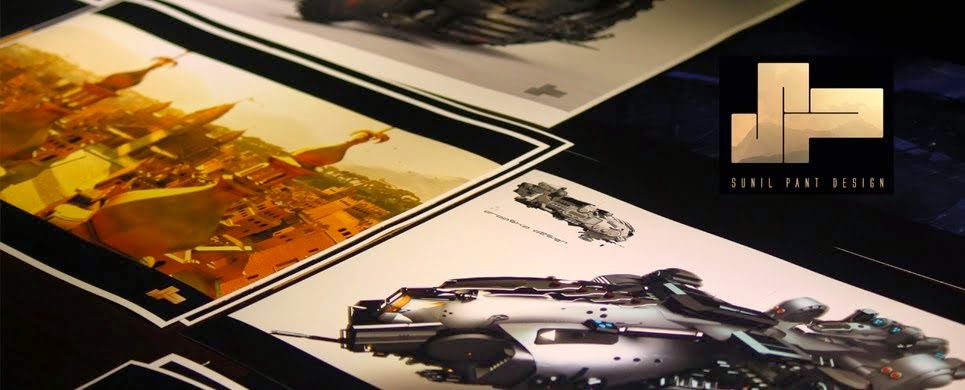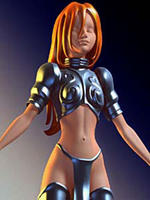 I took these notes at SIGGRAPH '05 held in LA.Hope it helps all you guys planning to make your way into creature development or who just like drawing and comming up with ideas for fantasy creatures.This would be a nice place to start. Happy drawing :-)
I took these notes at SIGGRAPH '05 held in LA.Hope it helps all you guys planning to make your way into creature development or who just like drawing and comming up with ideas for fantasy creatures.This would be a nice place to start. Happy drawing :-)Creature development
- What does it look like?
- What is it supposed to do?
- What is the Design Style of the creature i.e. is he cartoon like or Photo-real?
- What is the body type of the creature?
- What is the surface type or skin type of the creature?
- How are we going to integrate it into our work? i.e. Bluescreen or Digital?
- What are the interactions of the creature going to be like?
- What is the creature’s relationship with the camera going to be like?
- What’s the scope of the creature’s use?
- What can the software do and more importantly what can I do with the software?
- Find out the problem in the early stages of the process and come up with a solution early on.
- Discuss with the team about what is required of the creature and not about what could be done.
- A digital creature is a set of articulated surfaces, constructed, animated and renderd by a computer.
- Use the artwork done and the reference material for this.
- What is the conceptual tone of the creature?
- Decide the Pose and the environment your going to put him in at this stage.
- Search for visual cues related to the creature you are drawing.
- What is the form and the material of the creature?
- Give it an Extreme Pose
- Extreme Form
- Musculature (according to requirement) buts ok to exaggerate.
- Keep him anatomically believable.
- Give character to the creature through foreshortening.
- Remember that the Concept art defines what is expected from the creature. i.e. its capabilities.
- Tone of the creature – is it Dark or Bright?
- Identify the key elements within the creature – the invariant Perceptual Cues. i.e. The way something moves.
- Define the Levels of importance of the various elements.
- Does the creature have a cartoon esthetic?
- If so give it simplified forms.
- Keep the creature physically plausible at every stage no matter how hybrid you make the creature.
- This style is probably the hardest to do as it is modeled from real-life.
- It has to, “HAS TO” be Proportionally and Physically accurate.
- What is the requirement of the concept of the artwork?
- What is the level of Physical realism?
- Symmetry
- Body Type
The body type of creatures can be classified into three different types :
Viz. Radial, Bilateral, Segmented.
- The difference above can have a large impact on the efficiency of the creature.
- Symmetry should not be assumed. Asymmetry is a KEY FEATURE of organic realism.
- Robots on the other hand would be a good example of bilateral symmetry.
Body Type:
- Bipedal
- Quadruped
- Winged
- Serpentine
- Special Designs
- Legs have Limited range of motion and the shoulders have a large range of motion.
Quadrapidal:
- The primary motion of such animals is driven by their forward legs.
- An artist would most likely face the most problems in dealing with the Head and Neck motion of these animals.
Winged:
- The motion of such animal is complex to deal with on ground.
- Folding wings also give a lot of rigging and deformation challenges.
- The artist could also run into articulation and deformation problems.
Serpentine:
- This creature may or may not have legs.
- The primary motion of this animal is driven by its head.
- Deformation issues range from the simple to the extreme.
Special Designs:
- These would include monopods and tripods i.e. Creatures with more than four legs.
- This catagory would also include transforming creatures.
- The sequential artwork is highly importaint in this type of creature.
Example. The ape like walk for the tripod creatures in War of the Worlds.
Scorpian King , Mummy 2.
The transformation problems that an artist faces here are the volume and proportion changes i.e. form changes.
Lets now talk a little bit about the Skin Type:
- Rigid
- Flesh
- Clothing
- Hair,Fur.
Rigid:
- In this case the deformation is non-existent.
- The motion is primarily defined by rigging.
Flesh:
- Since flesh has an Elastic property to it, it can strech, compress, wrinkle and fold.
- The anatomy of the animal in this case would lie below the skin itself.
- The range of motion of such type of creatures factor heavily into the difficulty of the problem.
- Its not only a surface with texture but also "DETAIL".
- Create the wrinkles.
Clothing:
Clothing can be of the following types:
- Loose Flowing
- Tight Fitti9ng
- Layerd
- Tattered
Cloth Dynamics:
- Key factors in dealing with cloth dynamics are:
- Dealing with the collision geometry.
- What is the material quality?
- Property similarity between multiple garments.
Scales, Hair and Fur:
- Length
- Density
- Variation.
Long fur - BIG PROBLEMS!
- The Props should preferebly be rigged seperately from the creature.
- The props often move locally in relation to the creature eg.Ear ring
- Make sure the props move with the creature and relative to him.
Ask yourself what does the creature do ?
Scope
Interaction
The answer to this question can be found in the script, Storboard and Animatics.
How "Hero" will the creature be? (how close to the camera)
How many shots will the creature be in?
Is the creature a hero or pawn?
What is the relationship of the creature with the camera and the size on screen?
This will answer the question of what will be the level of detail of the creature.
For a "Hero" :
Medium-built for which there is usage but does not intend to hold up any kind of scrutiny.
Low-simple anatomical form i.e. no deformation.
For a "Pawn" :
A block form.
No articulation - way in the background.
Rule of thumb:
The size of the hero is 1/3rd size on screen.
1/5th if lowres.
Length of time on screen:
Remember who the audiance will be.
The screen size has an inverse relationship to the fedility requirement of the creature.
Interaction and Intigration:
Props
Other digital Creatures.
Environment
Live actors.
Environment interaction:
Factors at work :
Shadow casting
Dust from Footfalls.
Creature moving through foliage.
Live actors:
Similarity of material between actor and the digital creature. - Lighting has a lot to to with this aspect.
Capacity to inigrate with live actors is related to the creatures design style.
Creating creatures with sucess:
- Ask the right questions before you start!
- The artwork should define the technique.
- Catagorize the answer between looks and behaviour.



